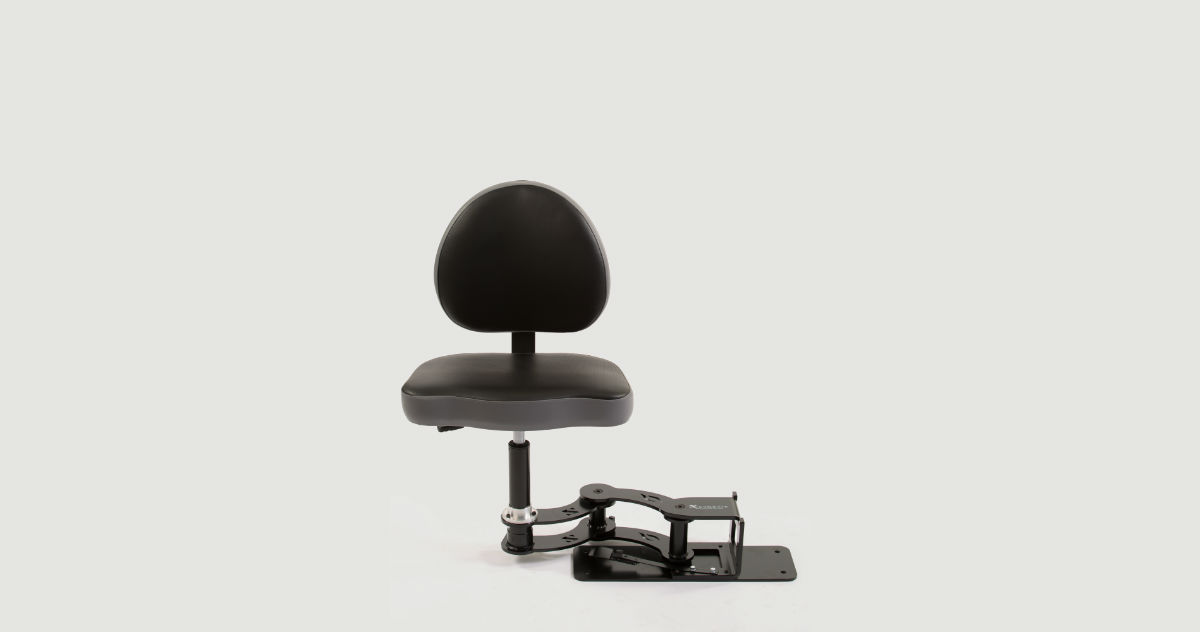
Certain work contexts are more challenging than others when it comes to ergonomics. To ensure an efficient and safe work environment, some situations require creative use of furniture, equipment and space. For instance, think of vehicles commonly used for travel in which a small office space is set up. Comfort and posture in this case are problematic.
The following case study explains the transformation of a Gaz Métro vehicle into an efficient workstation.
Initial workstation – Context
Énergir acquisition, maintenance and tracking technicians use adapted Savana trucks. These workers not only use their vehicles to travel to different locations, they also complete paperwork work in them. Generally, technicians spend 90% of their time at the client’s home and 10% inside the truck. This means the worker spends between 10 to 30 consecutive minutes seated in the truck at each different stop.
The workstations in these trucks included a work surface on which there was a laptop, mouse and fax. The worker sat on a low-grade office chair with wheels removed to anchor it to the ground. A pivot base attached to the floor and to the work surface ensured stability. Height was adjustable; a knob also provided minimal backrest depth adjustment.
Risk analysis
A thorough workstation evaluation highlighted some risks associated with this seated posture. First, upgrading the chair was necessary to reduce discomfort. Risk factors are mainly linked to demanding work postures and are often a result of using inadequate equipment. These postures are especially difficult for the neck and shoulders. Here are the risk factors associated to bad posture in this example:
- The chair did not provide optimal lumbar support;
- Lack of proper foot support (feet not resting flat on the floor) caused varying degrees of compression behind the thighs depending on worker size;
- Proper chair adjustment according to the task at hand was impossible forcing the user to bend at the trunk;
- Seat size and padding were insufficient;
- Varying degrees of flexion, abduction and elevation of the shoulders caused by lack of adequate height adjustment were required depending on the size of the worker.
Anchoring the chair firmly to avoid contact with other equipment in the vehicle was a primary concern in this type of work environment.
Workstation modifications
This situation required a custom-made chair well-adapted to this specific work environment. Here are the components of this specially adapted chair:
- First, the seat offers flexible height adjustment for workers of different size. Moreover, the backrest depth also adjusts to provide better support of the lower limbs.
- Second, the backrest shape and height adjustment provide better lumbar support. Improved backrest and seat padding increase comfort.
- Third, two ball joints attach the chair to the furniture for easier adjustment and to avoid twisting the trunk.
- Finally, a strap with a snap hook fastens the seat during travel.
Other elements to consider
Recommendations were also made to change the light source and its position. Bad posture was often a result of glare that made reading on the computer screen difficult. A lowered work surface now prevents users from lifting the chair and using the footrest.
A keyboard drawer and external keyboard would allow screen height adjustments. However, because computer use rarely exceeds 30 consecutive minutes, this change was unnecessary.
This case study shows that creating an ergonomic work environment is feasible. Task evaluation and R&D led us to overcome challenges and improve the working conditions of these workers.
Share your projects with us; we can develop custom solutions specifically designed for you!


